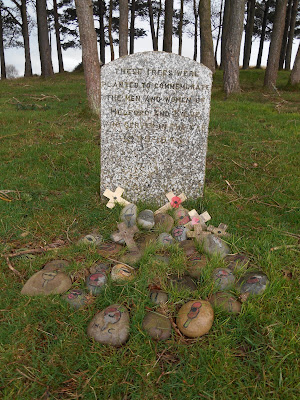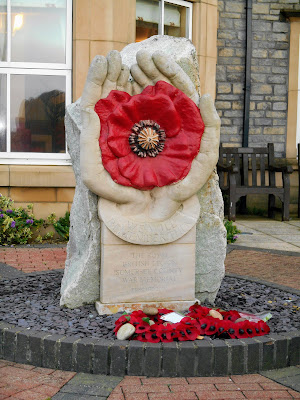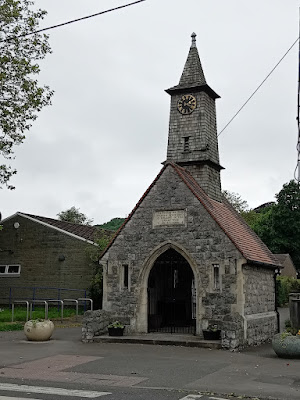The walled garden located at the back of St George's Church in Dunster is a war memorial garden. It is dedicated to the men of Dunster who died for their country in both world wars. It can be accessed through a gate in the wall on Priory Green just opposite the dovecote.
Saturday, 14 October 2023
Unusual War Memorials
Sunday, 1 October 2023
John Biffen, MP and Government Minister
(William) John Biffen was born in Bridgwater on 3rd November 1930. His father Victor William Biffen was the tenant farmer at Hill Farm, Otterhampton. He was educated first at Combwich Village School and later at Dr Morgan's Grammar School in Bridgwater, where he became the head boy. He was awarded a scholarship to Jesus College, Cambridge University, where he studied history and graduated with a first class honours degree in 1953. He worked for Tube Investments Ltd from 1953-60 and the Economist Intelligence Unit 1960-61.
John Biffen developed an interest in politics at Cambridge University and he was chairman of the university Conservative Association. He stood unsuccessfully for the parliamentary constituency of Coventry East at the 1959 general election. In 1961 he won the by-election for the Oswestry constituency (renamed Shropshire North in 1983) and he held the seat until 1997. He was a Eurosceptic and in 1971 he voted against the UK joining the European Economic Community.
He served as Chief Secretary to the Treasury (May 1979-January 1981), Secretary of State for Trade (January 1981-April 1982) and Leader of the House of Commons (April 1982-June 1987). He made remarks that upset the Prime Minister, Margaret Thatcher and he was dropped from the Cabinet after the 1987 General Election and returned to the back benches.
John Biffen married Sarah Wood in 1979. He was made a life peer in June 1997 and moved to the House of Lords. His title was Baron Biffen of Tanat in the County of Shropshire. He died on 14th August 2007, aged 76. He is commemorated in Combwich with a blue plaque on the wall of Otterhampton Village Hall.
























